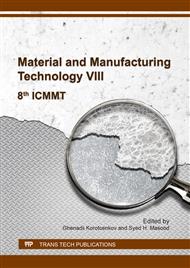p.148
p.155
p.165
p.172
p.177
p.182
p.187
p.196
p.201
Pseudocapacitive Behavior of Ni(OH)2/NiO Hierarchical Structures Grown on Carbon Fiber Paper
Abstract:
Transition metal oxides and hydroxides, specifically nickel (Ni), are currently being studied for their pseudocapacitive behaviors due to their high specific capacitance and efficient redox reactions. In this study, nickel oxide (NiO) and nickel hydroxide [Ni (OH)2] hierarchical structures were grown on carbon fiber paper via hydrothermal treatment for a binder-free electrode for pseudocapacitor. Cyclic voltammetry was employed to determine the influence of annealing temperature on the specific capacitance of NiO-and/or Ni (OH)2 – carbon fiber electrodes. The NiO – carbon fiber electrode annealed at 400°C exhibited the highest specific capacitance of about 1993.12 F/g at a scan rate of 2 mV/s. The carbon fibers were fully covered by NiO platelets which possibly provide efficient transport of electrolyte, enhancing the capacitance.
Info:
Periodical:
Pages:
177-181
Citation:
Online since:
October 2017
Authors:
Keywords:
Price:
Сopyright:
© 2017 Trans Tech Publications Ltd. All Rights Reserved
Share:
Citation:


